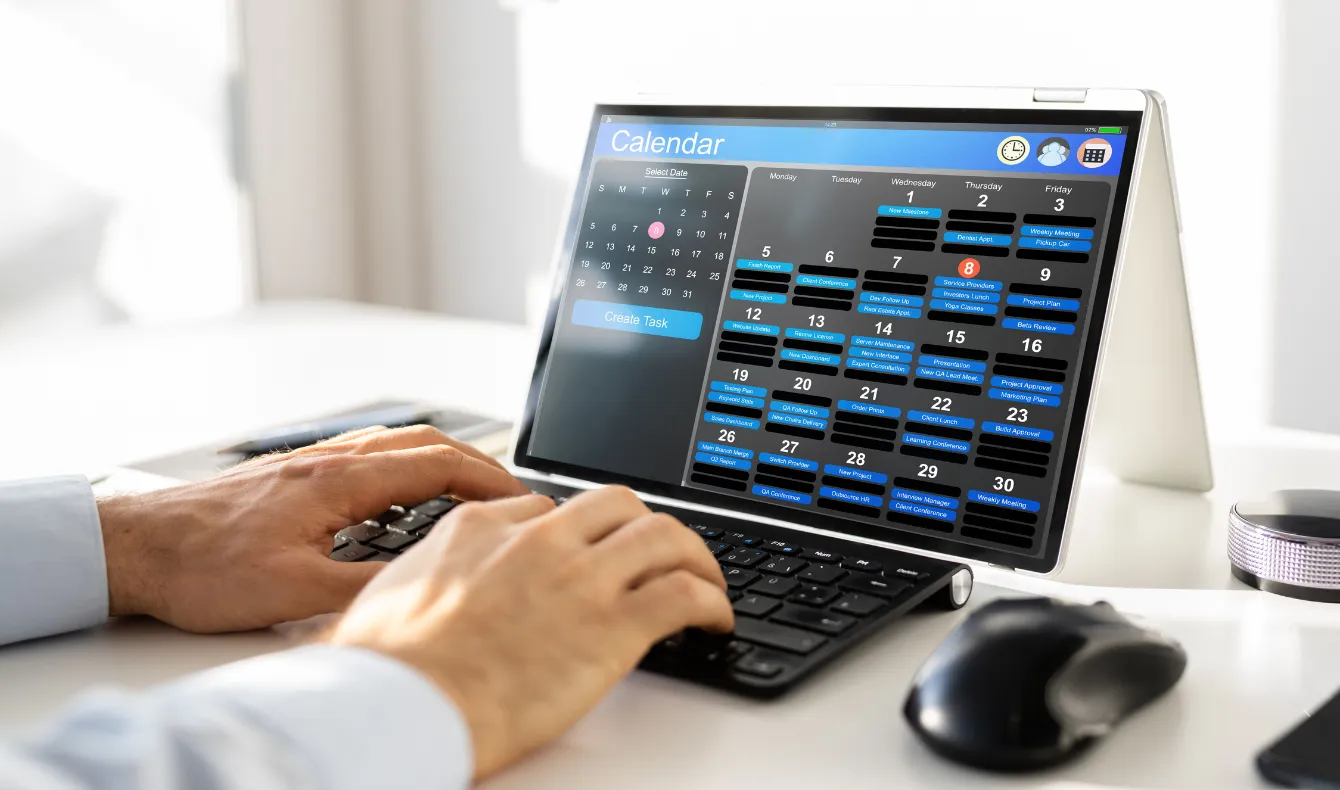Introduction
In today’s fast-paced world, effective time management is essential for productivity and success. Whether you are an entrepreneur, a freelancer, or part of a large corporation, managing your calendar efficiently can make a significant difference in your workflow. Calendar management and appointment scheduling are critical skills that help individuals and businesses organize their tasks, meetings, and events efficiently. This guide will explore the best practices, tools, and strategies to optimize calendar management and appointment scheduling.
What is Calendar Management?
Calendar management involves organizing, scheduling, and prioritizing tasks, meetings, and events to optimize time and productivity. A well-managed calendar ensures that individuals and teams can work efficiently without overlapping commitments or missed deadlines.
Benefits of Effective Calendar Management:
- Better Time Management: Organizing tasks and appointments helps individuals focus on what’s important, reducing wasted time.
- Increased Productivity: Structured schedules ensure tasks are completed on time, minimizing distractions.
- Reduced Stress: Clear scheduling prevents last-minute rushes and conflicts, leading to a more balanced work-life routine.
- Improved Collaboration: Teams can work efficiently when meetings and deadlines are well-coordinated.
What is Appointment Scheduling?
Appointment scheduling is the process of setting up and managing meetings, consultations, or service appointments. It involves selecting appropriate times, avoiding conflicts, and ensuring all participants are informed and prepared.
Common Challenges in Appointment Scheduling:
- Double Bookings: Scheduling overlapping meetings can lead to confusion and inefficiency.
- Missed Appointments: Forgetting meetings or failing to send reminders can disrupt workflow.
- Time Zone Differences: Remote teams often struggle with scheduling across multiple time zones.
- Last-Minute Cancellations: Frequent cancellations can lead to wasted time and lost opportunities.
Best Practices for Calendar Management
1. Prioritize Your Tasks
Not all tasks are equally important. Use priority-based scheduling to focus on high-impact activities first. A common approach is the Eisenhower Matrix, which categorizes tasks into:
- Urgent and Important: Complete these tasks immediately.
- Important but Not Urgent: Schedule them for later.
- Urgent but Not Important: Delegate to others if possible.
- Neither Urgent nor Important: Eliminate or postpone these tasks.
2. Use Time Blocking
Time blocking involves allocating specific time slots for different tasks. For example, you can set aside:
- Morning (9 AM – 11 AM): Focused work sessions.
- Midday (11 AM – 1 PM): Meetings and calls.
- Afternoon (2 PM – 4 PM): Project work or creative tasks.
This strategy minimizes distractions and keeps your schedule organized.
3. Leverage Automated Scheduling Tools
Modern scheduling software eliminates the hassle of manual appointment setting. Some popular tools include:
- Google Calendar: Ideal for basic scheduling and reminders.
- Microsoft Outlook: Great for business professionals and team collaboration.
- Calendly: Automates appointment bookings with external clients.
- Acuity Scheduling: Perfect for service-based businesses needing automated scheduling and payments.
4. Set Buffer Times Between Meetings
Avoid back-to-back meetings by scheduling buffer time between them. A 10-15 minute gap allows you to take notes, refresh, and prepare for the next meeting.
5. Sync Calendars Across Multiple Platforms
Many professionals use multiple calendars (work, personal, team calendars). Syncing them ensures there are no scheduling conflicts and keeps everything in one place.
6. Regularly Review and Optimize Your Schedule
Set aside time weekly to review your calendar, adjust priorities, and reschedule if necessary. This prevents last-minute chaos and ensures alignment with your goals.
Best Practices for Appointment Scheduling
1. Offer Flexible Scheduling Options
Providing clients or colleagues with multiple available time slots increases the chances of booking a mutually convenient time. Scheduling tools like Calendly allow users to select from pre-defined slots.
2. Send Automatic Reminders
Appointment reminders reduce no-shows and last-minute cancellations. Most scheduling tools offer email or SMS notifications to ensure attendees remember their commitments.
3. Consider Different Time Zones
If you work with international clients or remote teams, use scheduling tools that automatically adjust time zones to prevent confusion. Tools like World Time Buddy can help find overlapping hours.
4. Enable Self-Scheduling for Clients
For businesses offering consultations, allowing customers to book appointments themselves saves time. Self-scheduling platforms provide real-time availability and prevent back-and-forth emails.
5. Allow Easy Rescheduling and Cancellations
Unexpected changes happen. Offering a simple rescheduling option ensures that canceled appointments do not lead to wasted time. Many scheduling platforms let users reschedule with just a few clicks.
6. Keep Meetings Purpose-Driven
Every scheduled meeting should have a clear agenda. Avoid unnecessary meetings and replace them with emails or quick updates if possible.
7. Use AI and Smart Scheduling Assistants
AI-powered scheduling tools like x.ai and Motion can suggest the best meeting times based on workload and availability, eliminating the need for manual coordination.
8. Monitor and Analyze Your Scheduling Patterns
Review your appointment data to identify trends. Are meetings too long? Are certain time slots more popular? Data-driven insights help optimize your scheduling approach.
Top Tools for Calendar Management and Appointment Scheduling
| Tool Name | Best For | Key Features |
|---|---|---|
| Google Calendar | Individuals & Teams | Free, cross-device syncing, integrations |
| Microsoft Outlook | Business Professionals | Email + calendar integration, team scheduling |
| Calendly | Client Appointments | Self-scheduling, time zone conversion, automation |
| Acuity Scheduling | Service Providers | Payment integration, automated reminders, client management |
| Motion | AI-Powered Scheduling | Automated task and meeting prioritization |
Conclusion
Effective calendar management and appointment scheduling are essential for maximizing productivity and maintaining a well-balanced work-life schedule. By implementing best practices such as prioritizing tasks, leveraging automation, and avoiding scheduling conflicts, you can streamline your workflow and make the most of your time.

